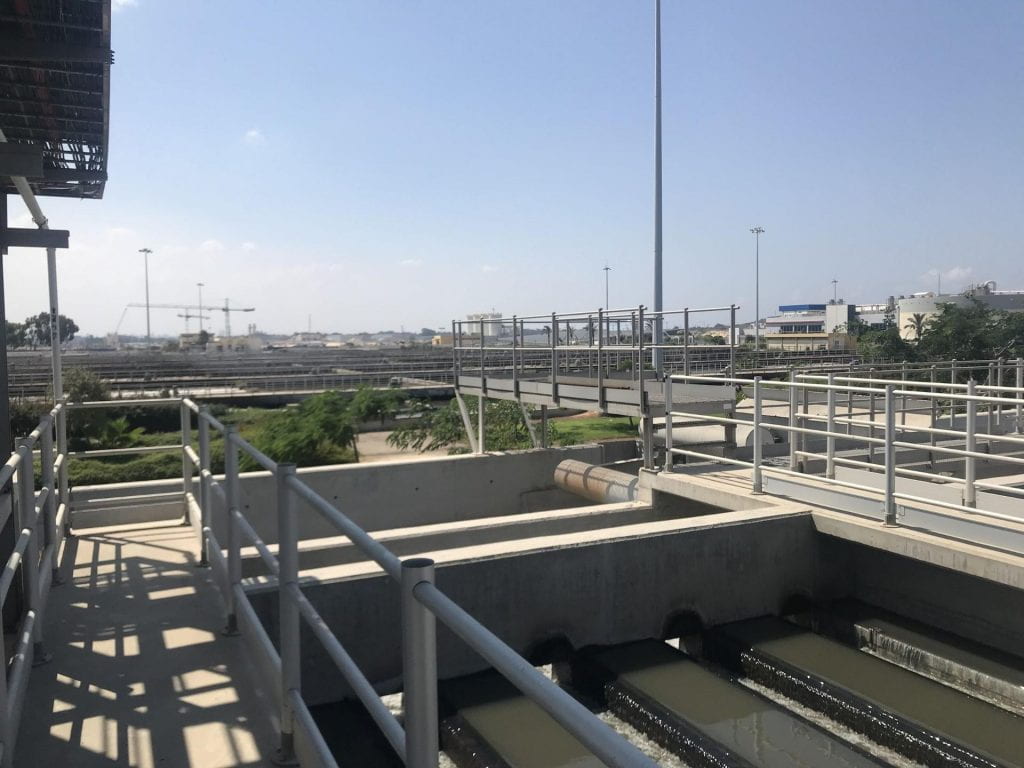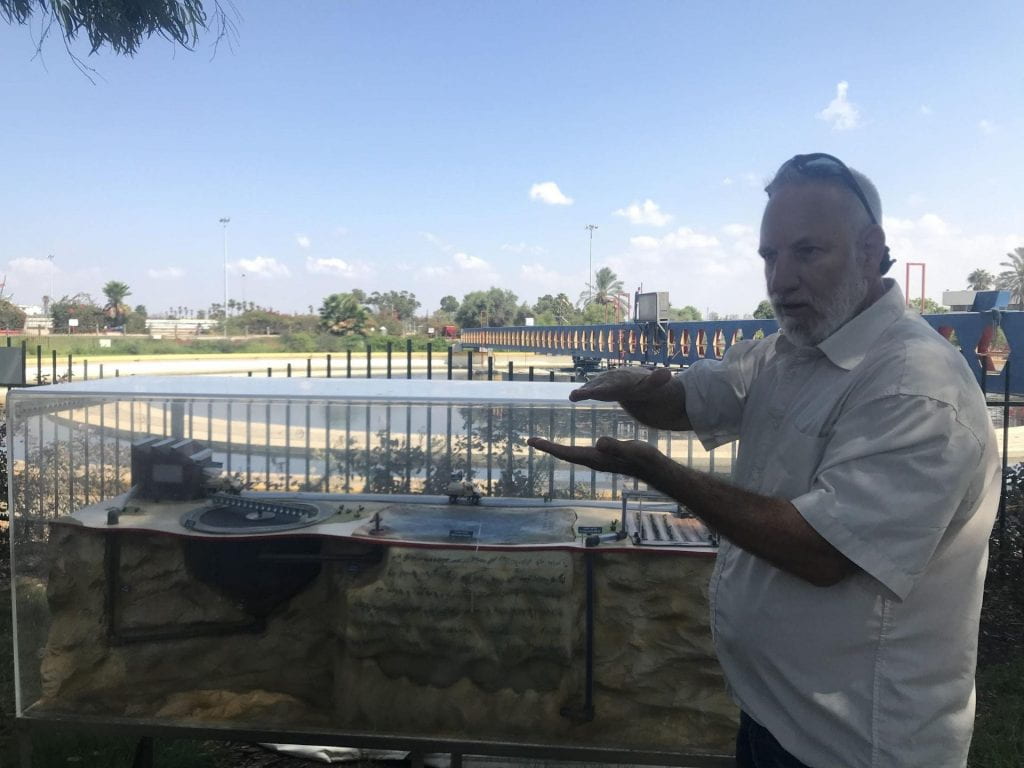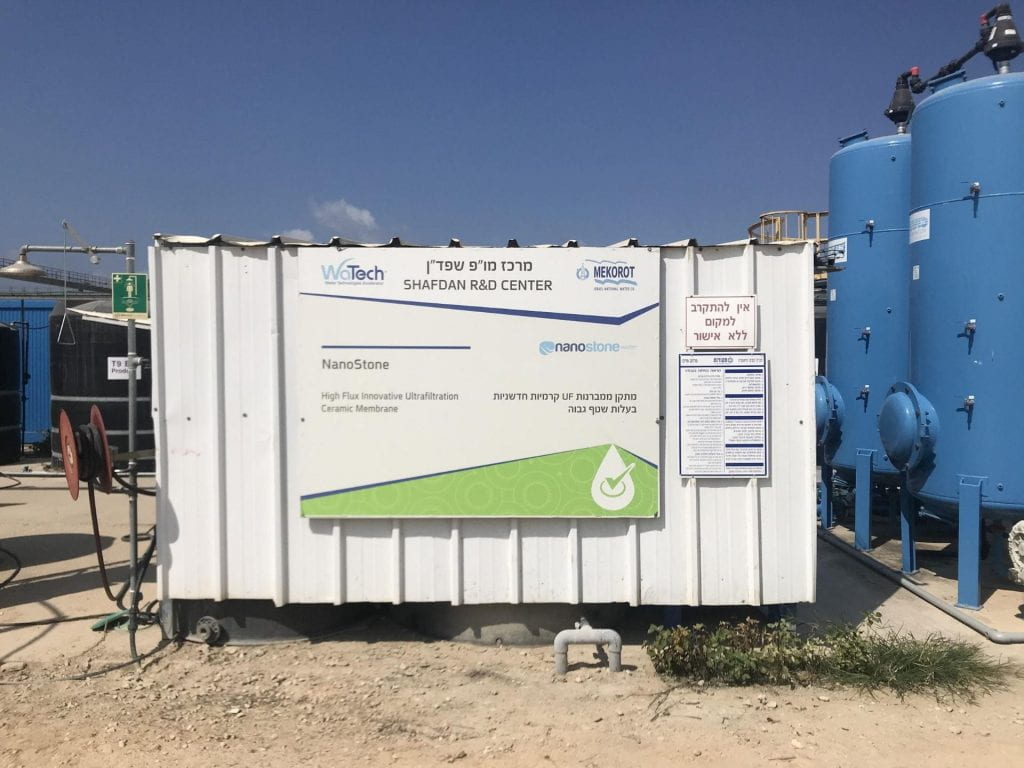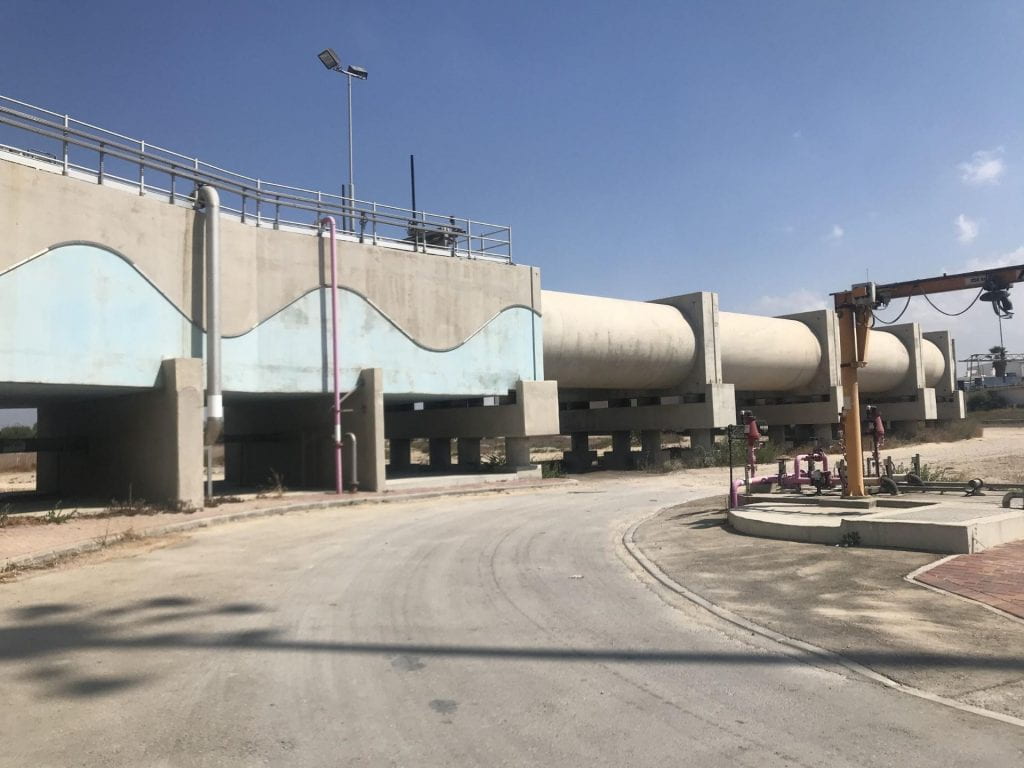Visiting Israel’s Water Treatment Facility at Shafdan
By Caroline Webster and Grace Wanjiku Wainaina
The Shafdan Wastewater Treatment centre is located on the outskirts of Tel Aviv. The main goals for the treatment centre are to minimize environmental pollution and protect the state’s limited water resources. The centre comprises a complex inter-region system that collects, treats and reclaims wastewater in urban areas and industrial zones in the Dan Region. All the wastewater is collected from the drains and transportation begins at the Reading Pumping Station, north of Tel Aviv.
The treatment process involves intensive infiltration through the use of sand dunes. These sand dunes are ideal to use because of their high porosity. The first stage of infiltration makes the waste water highly concentrated. This concentrate then undergo reverse osmosis in a valved system to eliminate the concentration.
The wastewater finally undergoes purification which involves the use of natural biological processes that are essential for removing and decomposing microorganisms in the water. It was worth noting that the surrounding vegetation serves as a source of oxygen for the disintegration of microorganisms. One of the byproducts of this process is biogas, which is a valuable source of revenue. Stainless steel and plastic are the main materials used for the pipes as it is robust and withstands rust.
All of the reclaimed water is supplied for agricultural use. The treated wastewater is sent to the Negev Desert. More than 60% of agriculture in the Negev is irrigated by Shafdan water. As part of the plans for future expansion, the centre is looking into more research and upscale of the infiltration system currently in place. More research will be done to see this into effect. The expansion will be necessary because the state’s population is increasing and therefore there’s more need to meet the increasing demand. However, one challenge with the expansion will be the limited availability of land. Shafdan is not very far from the Tel Aviv, therefore the growing population will also require more land yet the centre needs to expand to meet the higher water demands.
At the plant, we were greeted at the R&D center to see the groundbreaking technology that is currently being developed to improve the process. Among these projects include porous ceramic filters, which would increase flux and decrease cost. As students in STEM, it was fascinating for us to see the immense work behind such an important process.
Overall, Shafdan was smelly and hot, and five days into our trip, we were fading. But the ingenuity shown and commitment to efficiency was inspiring. It is proof that where there are limited resources, people are capable of using everything available to them. Israel is so limited that not even waste is wasted.
Tertiary treated wastewater vs. black untreated water. It looks as if it came straight from a spring!
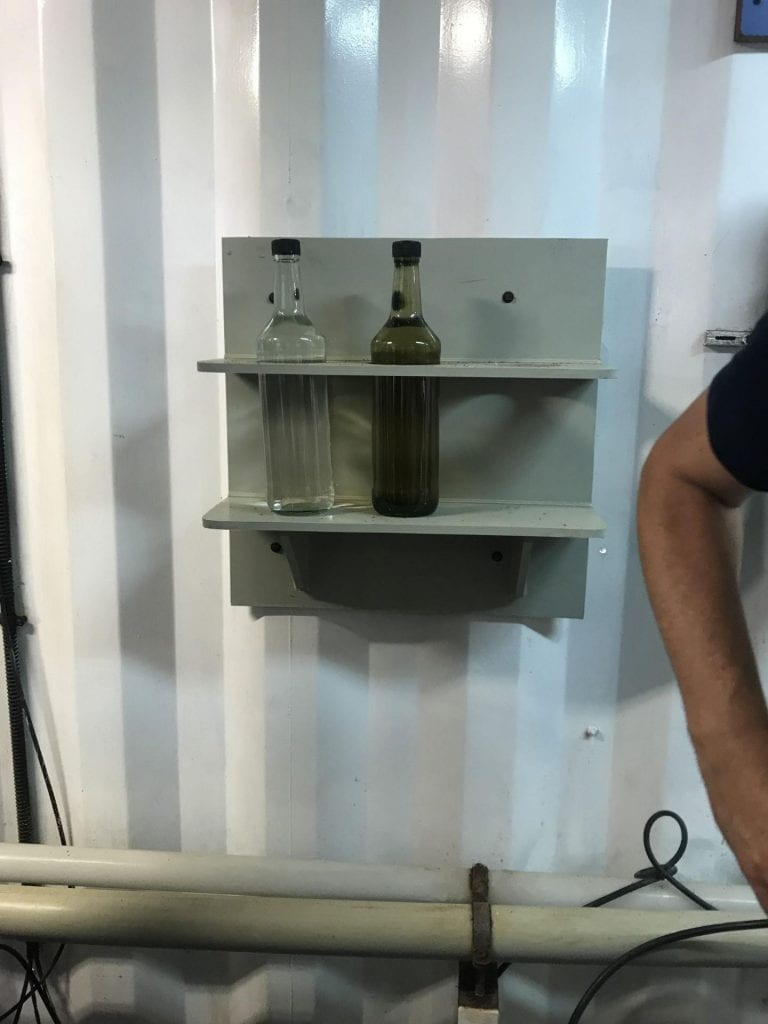
Our guide explaining a diagram of the treatment process. Wastewater is filtered, then separated in a huge centrifuge tank. It is then pumped into a large pool above an aquifer, allowing the water to penetrate through sand in the final treatment step. It is then ready for irrigation.
